Cracked Dog Paws: Causes, Treatment, And Prevention Tips


Your dog is limping around or licking its paws more than usual and when you go to take a closer look, you see the pads are looking dry, cracked and inflamed. But what causes those cracked dog paws anyway? Is there anything you can do to help your pup or prevent it from happening again?
Don’t worry, you’ve come to the right place. In this article, we’ll explore the common causes of cracked paw pads, provide tips for treating them at home, and give you advice on how to keep your dog’s paws healthy and happy. Stick with us to learn everything you need to know about repairing those cracked dog paws!
What Causes Dry And Cracked Dog Paws?
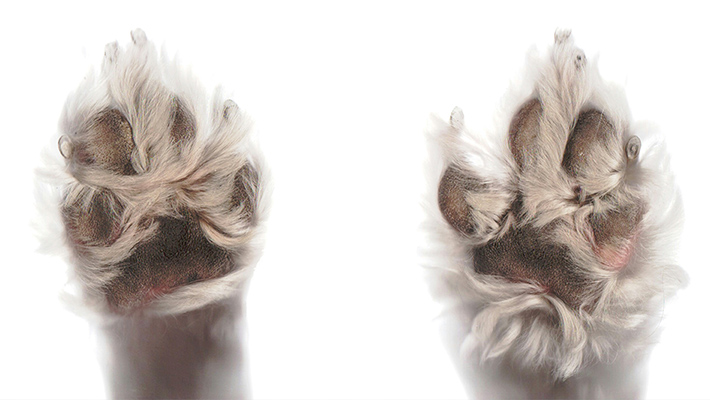
Cracked dog paws are a common problem for dogs, especially in extreme weather conditions or when they walk on rough surfaces.
Here are some of the common causes of this condition:
Dry, Rough Terrain
One of the most common causes of dog cut paw pad or cracked paws in dogs is walking on dry, rough, or abrasive surfaces. Things like concrete, asphalt, gravel, sand, and salt can all dry out and crack your dog’s pads.
For instance, during summer, hot asphalt can burn paw pads, causing cracks and blisters. On the other hand, dry winter air and icy surfaces treated with salt or chemicals can dry out paw pads and lead to cracking.
On top of that, constant friction and irritation lead to painful cracks and splits. Providing your dog with protective gear like dog booties, paw balm, or paw wax before going out on these surfaces can help prevent their paws from becoming cracked and damaged.
Allergies
Dogs can also develop cracked paws from contact allergies to certain surfaces or chemicals. Things like fertilizers, De-icers, pesticides and certain cleaning products may contain irritating chemicals that your dog’s paws react to. The reaction leads to inflammation, redness, and cracking of the pads. If you suspect your dog has a contact allergy, talk to your vet about allergy testing and ways to avoid exposure to potential allergens.
Nutritional Deficiencies
A lack of certain nutrients in a dog’s diet can also contribute to cracked paws. Most importantly, a deficiency in fatty acids like omega-3s can lead to dry, irritated skin and paw pads. Supplementing your dog’s diet with fish oil or flaxseed oil can help improve skin and pad hydration. Vitamin E, biotin, and protein deficiencies can also play a role in pad health, so feeding a high-quality diet appropriate for your dog’s age, size, and activity level is important. Hence, you should know how to choose the best dog food for your furbaby.
Excessive Moisture
While dry pads are the most common cause of cracks, excessive moisture can also soften pads and make them more prone to injury. Things like frequently walking through puddles, streams or dewy grass, combined with a lack of drying and protection, creates an environment where cracks and infections can develop.
Be sure to thoroughly dry your dog’s paws after being outside in moist conditions and apply a protectant like wax or balm, especially if they commonly walk in these areas.
By determining the underlying cause of your dog’s cracked paws and making appropriate changes, you can help relieve their discomfort and promote healing. Be patient through the process, as severely cracked paws can take weeks to heal fully. With time and proper care, your dog will be back to padding around comfortably again.
Signs and Symptoms of Cracked Dog Paws
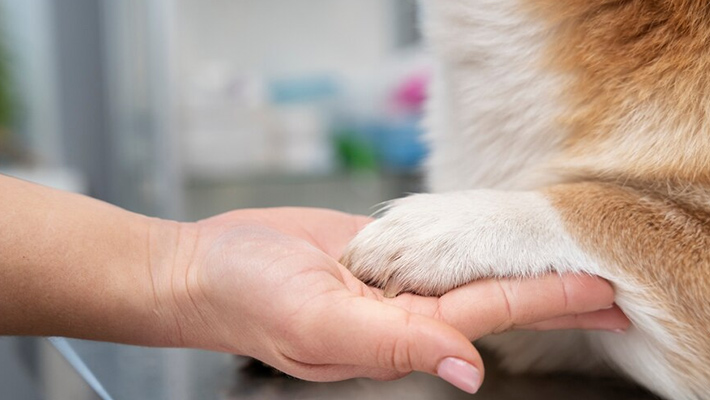
As a dog owner, you should regularly inspect your dog’s paws for any signs of cracking or injury. Cracked paws can be painful for your dog and lead to infection if left untreated. Some things to look for include:
Red, Irritated Skin
The skin on and around the paws may become red, swollen, and irritated. This is usually one of the first signs that something is wrong and your dog’s paws are drying out or becoming cracked. The redness could be accompanied by your dog chewing paws constantly, along with licking and biting, which further aggravates the irritation.
Limping or Difficulty Walking
As the cracks in the paws deepen, walking can become painful for your dog. You may notice your dog limping, hesitating to walk or go outside, or licking their paws excessively after being active. This level of discomfort requires immediate treatment to promote healing and prevent infection.
Dry, Cracked Pads
If the pads themselves start to look dry, flaky, or cracked, it’s time to take action. The pads should be soft, smooth, and pliable. Rough, thick, or cracked pads indicate your dog needs more paw care and protection from the elements.
Bleeding
In severe cases of cracked paws, the pads or skin may start to bleed, especially after activity or walking on rough surfaces. Bleeding paws are extremely painful and require professional veterinary care. Do not attempt to treat bleeding paws at home.
Regularly inspect your dog’s paws for these symptoms to figure out if their paws are cracking and start a treatment plan right away. Keeping your dog’s paws well moisturized and protected is the best way to prevent painful cracks and ensure their comfort and mobility. You can also consult your vet for advice and recommendations on the best way to treat and heal dog cracked paws once you notice your dog exhibiting these signs.
Treating Cracked Dog Paws at Home
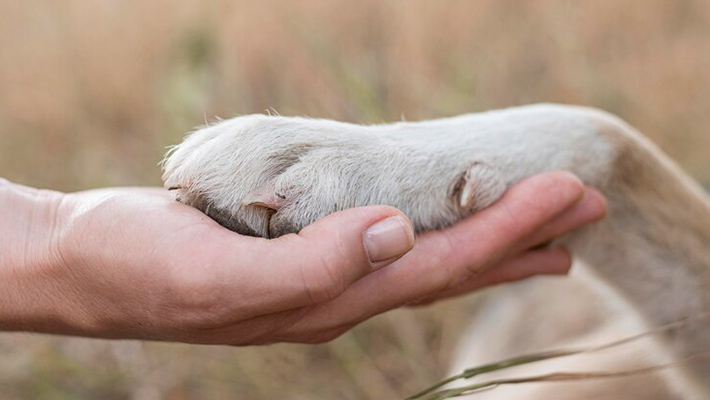
Your dog’s paws take a beating, so it’s no surprise that cracks and splits can develop. Minor cracks can often be treated at home to prevent infection and promote healing. Here are some steps you can take:
Keep the Area Clean
Gently wash the cracked paw with warm water and a mild cleanser to remove any dirt or debris. Pat dry thoroughly with a clean cloth, You want to keep the area as clean as possible to avoid infection while it’s healing.
Apply A Protective Balm
Apply a thick balm, wax, or ointment designed for cracked paws 3-4 times a day. Look for ingredients like shea butter, jojoba oil, beeswax, and vitamin E to moisturize, protect, and help heal the skin. Bag Balm, Musher’s Secret, and Natural Dog Company Paw Soother are popular, vet- approved options.
Protect The Paw
Once you’ve applied a moisturizing balm, cover the paw with dog booties, paw pads, or bandages when your dog goes outside. This protects the cracked area from irritants and further damage. Be sure to remove the covering once your dog comes inside to allow air to reach the paw.
Limit Activity
While the paw is healing, limit walks and playtime to prevent the crack from getting worse or the bandage/bootie from coming off. Carry your dog or use a sling to take them out to go to the bathroom. Crate rest may be needed for severe cracks.
See A Vet If It’s Severe
For deep cracks that bleed or show signs of infection like swelling, pus, or redness, see your vet. They can properly clean and bandage the wound, and may prescribe oral or topical antibiotics. Severe cracks often require professional veterinary care to heal properly and avoid complications.
By keeping your dog’s cracked paws clean and properly cared for at home, most minor cracks will start to heal within 3 to 7 days. Be diligent in checking and reapplying balms and bandages, limit activity, and call your vet right away if you notice any signs of infection or the crack worsening.
Are There Any Natural Remedies For Paw Injuries?
Yes, there are several natural remedies that can be effective for treating your dog’s paw injuries. Here are some options:
Herbal Tea Rinses
Soaking your dog’s paws in a cool herbal tea made from anti-inflammatory herbs like chamomile can soothe and heal irritated skin. Here is how you can make a herbal tea rinse to soothe your dog’s paws:
Step 1: Select anti-inflammatory herbs like chamomile, peppermint or calendula, which are known for their soothing properties.
Step 2: To prepare the tea, you should follow the steps below:
- Use 8 tablespoons of fresh herbs or 4 tablespoons of dried herbs.
- Place the herbs in a teapot.
- Pour a quart of boiling water over the herbs.
- Allow the mixture to steep for 20 minutes.
Step 3: After steeping, strain out the herbs. Then set the tea aside and let it cool down to a safe temperature for your dog’s paws.
Step 4: Once the tea has cooled down, you can then soak your dog’s paws directly in the tea. You can also pour the tea into a spray bottle and spritz it on your dog’s affected skin three to five times a day
Remember to always do a patch test first to ensure your dog doesn’t have an allergic reaction to the herbs.
Omega-3 Fatty Acids
Adding omega-3 supplements to your dog’s diet can help improve skin health and promote healing from within. Some foods that are rich in omega 3 fatty acids and safe for dogs include:
- Fish: Salmon, anchovies, krill, and sardines are excellent sources of omega-3 for dogs. You can add cooked or dried fish to their diet but make sure that they are not high in sodium content and do not contain any spices like onion or garlic.
- Seeds: You can also incorporate flaxseeds and chia seeds into your dog’s diet as they are a good source of omega-3 fatty acids which can support your dog’s skin health. In addition, Flaxseeds also contain fiber, which can aid in digestion. But make sure to grind the seeds properly before giving them to your dog to prevent choking.
- Cod Liver Oil: Although more of a supplement than a food, cod liver oil is rich in omega-3 fatty acids. Just one tablespoon provides 2,438 mg of EPA and DHA.
Here are some more natural remedies for treating cracked dog paws:
Turmeric Paste: Turmeric has natural anti-inflammatory properties. You can make a paste with turmeric powder and water and apply it to the affected area to help reduce inflammation and promote healing.
Aloe Vera: This plant is known for its soothing and healing properties. Applying aloe vera gel to the cracked paws can help to moisturize and heal the skin.
Honey: Known for being a natural antibacterial and can be applied to wounds to help prevent infection and speed up healing.
Coconut Oil: It’s a natural moisturizer that can help to heal dry and cracked paws. It also has antibacterial properties.
Vinegar Rinse: A diluted apple cider vinegar rinse can help to clean wounds and prevent infection due to its antiseptic properties.
When To See The Vet For Cracked Dog Paws
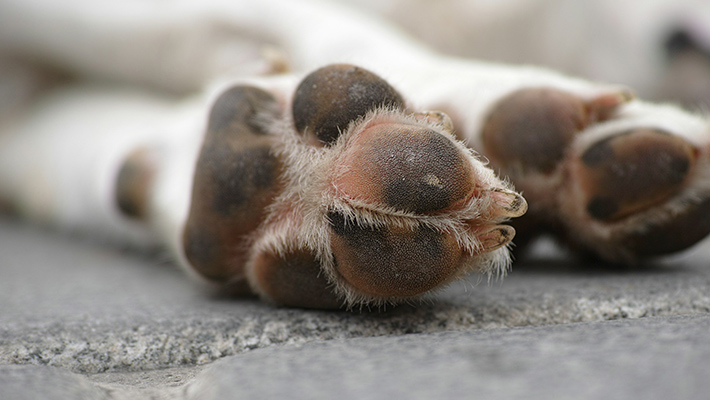
Does your dog have cracked paws that don’t seem to be healing or are getting worse? It’s a good idea to have your vet examine them. While minor cracks often heal on their own with home treatment, severe or persistent cracks can lead to pain, bleeding, and infection. See your vet right away if your dog’s cracked paws show any of the following symptoms:
Bleeding
If the cracks in your dog’s paws are bleeding significantly or won’t stop bleeding, it’s best to have them checked out. Your vet can determine if stitches or bandaging are needed to help the paws heal and prevent excessive blood loss.
Infection
Are your dog’s paws swollen, oozing pus, or have a foul odor? These can be signs of an infection that requires antibiotic treatment. An infected crack can be quite painful for your dog, so don’t delay in having your vet examine the paws.
Limping
Is your dog limping or avoiding walking on a cracked paw? This can indicate the crack has become quite painful or deep. Your vet may need to numb the area, clean and treat the wound, and possibly bandage the paw to promote healing and provide pain relief.
Paw Pad Damage
In severe cases, a deep crack can damage your dog’s paw pads or the tissues underneath. Your vet will need to assess the severity of the damage and may need to surgically close and repair the crack to prevent permanent injury.
While cracked paws are usually not life-threatening, they do require proper care and treatment to heal. Don’t hesitate to have your vet examine your dog’s paws, especially if you notice symptoms of bleeding, infection, pain, or damage. With prompt diagnosis and the right treatment, most cracked paws will heal quickly and your dog will be back to walking comfortably again.
Cracked Dog Paws Prevention Tips
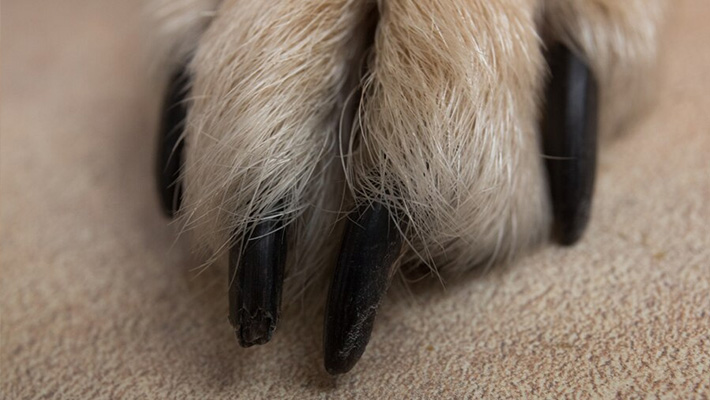
To keep your dog’s paws healthy and avoid painful cracks, there are several precautions you can take.
Groom Their Paws Regularly
Make it a habit to check your dog’s paws over when you groom them. Trim their nails if they get too long, and file down any sharp edges. Long nails can cause pain if they press into the paw pads. While grooming, also check for any foreign objects stuck in the paw pads, like burrs or stones. Remove them to prevent irritation.
Moisturize Their Paws
Apply a paw balm, wax, or moisturizer regularly, especially in dry, cold weather. Look for a product containing hydrating ingredients like shea butter, jojoba oil, beeswax, and vitamin E. Gently massage it into your dog’s paw pads to keep them supple and prevent cracking. For severely dry or cracked paws, apply a thick ointment and have your dog wear dog booties when outside to help seal in moisture.
Limit Your Dog’s Time on Hot or Rough Surfaces
Walking on hot asphalt or concrete, as well as very rough or rugged terrain can damage your dog’s paw pads over time. Hence, prevent your dog from walking on hot or rough surfaces, especially in hot weather. Hot sand and gravel can also burn sensitive paw pads. Consider having your dog wear dog booties for walks on these surfaces.
Rinse and Dry Their Paws
When coming inside from walks, always wipe your dog’s paws down with a damp cloth to remove any dirt or debris stuck to them. In winter, wash away any ice, salt, or chemical de-icers from their paws, then pat them dry. These substances can irritate paw pads if left on for long periods. Make sure to dry in between paw pads as well.
Taking these preventative steps will help keep your dog’s paws healthy, supple and crack-free. Be vigilant and if you do notice any signs of paw pad damage or cracking, contact your vet. They can recommend treatment to help soothe and heal sore paw pads before infection sets in. Keeping your dog’s paws in tip-top shape will ensure many pain-free adventures together!
Wrapping Up
So, there you have it. Now you’re armed with the knowledge to spot, treat, and prevent cracked paws in your pup. While they can be painful and frustrating for both you and your doggo, just remember that with a little TLC and prevention, you can keep those paws smooth and crack-free.
Be regular about moisturizing and protecting their paws, especially in harsh weather. And if cracks do happen, don’t panic – just reach for the bag balm and get ready for some quality snuggle time while they heal up. Keep these tips in your back pocket, give those paws some love, and you and your four-legged pal will be marching happily together for miles to come.





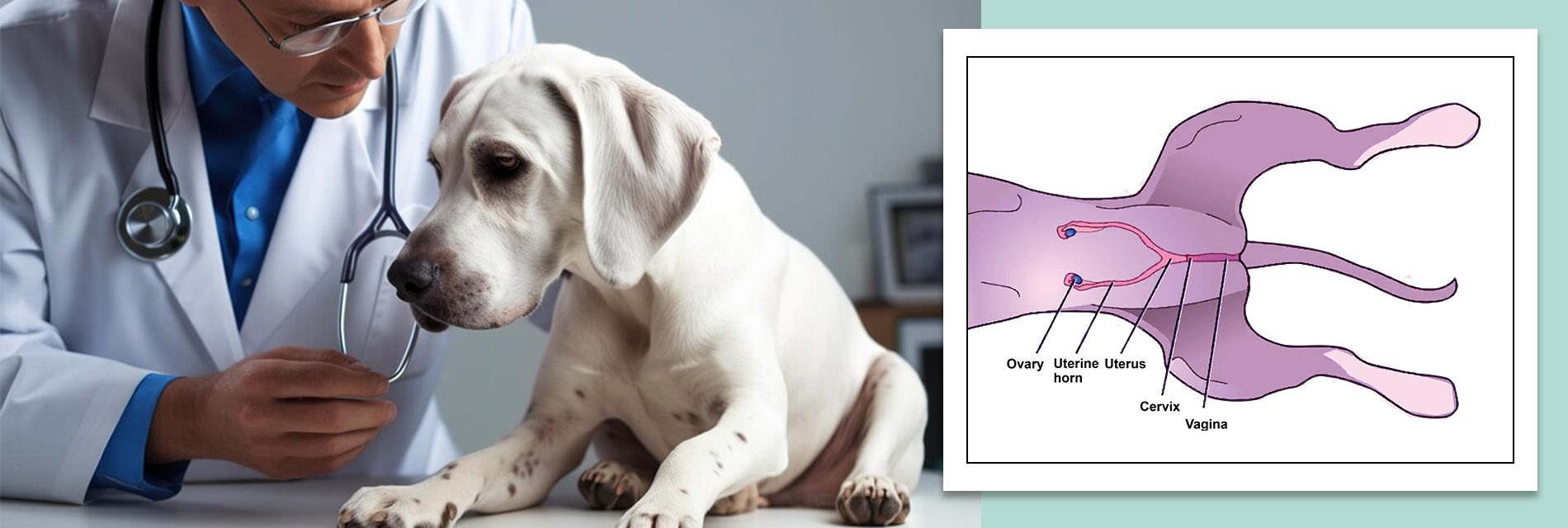

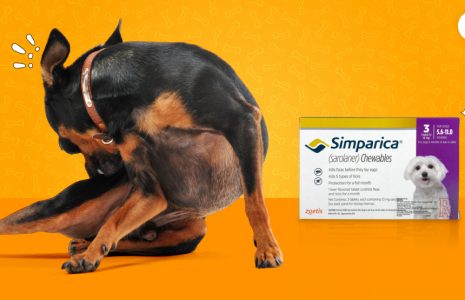
All Comments
Nicholas
29 February, 2024
Simply desire to say your article is as surprising. The clearness in your post is simply excellent and i could assume you are an expert on this subject. Fine with your permission let me to grab your feed to keep up to date with forthcoming post. Thanks a million and please carry on the gratifying work.
Reply
17 May, 2024
I'm very happy to see your article. Thanks so much and i'm taking a look forward to contact you.
Reply